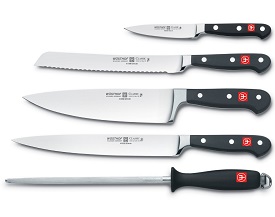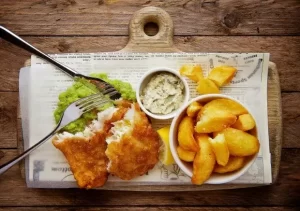
When it comes to creating culinary masterpieces, having the right kitchen knife can make all the difference. The market is flooded with a wide array of kitchen knives, each designed for specific tasks, making the process of choosing the perfect one overwhelming. However, fear not! In this article, we’ll navigate through the world of kitchen knives together, providing expert insights to help you make the best choice that suits your needs.
Types of Kitchen Knives
1. Chef’s Knife
The Chef’s Knife, also known as a cook’s knife, is a versatile, all-purpose knife that’s essential in any kitchen. With its broad blade and curved edge, it excels in chopping, mincing, slicing, and dicing various ingredients, making it the go-to choice for professional chefs and home cooks alike.
2. Santoku Knife
The Santoku Knife, originating from Japan, is another multi-purpose knife that translates to “three virtues.” Its design allows it to excel in slicing, dicing, and mincing, particularly when working with vegetables and fish.
3. Paring Knife
The Paring Knife is a small, versatile knife with a pointed tip, ideal for intricate tasks like peeling, trimming, and carving small fruits and vegetables.
4. Bread Knife
The Bread Knife features a long, serrated blade, perfect for slicing through crusty bread and delicate pastries without crushing them.
5. Utility Knife
The Utility Knife is a mid-sized knife that bridges the gap between a chef’s knife and a paring knife, making it suitable for a wide range of tasks.
6. Boning Knife
The Boning Knife boasts a thin, flexible blade, designed to remove bones from meat and poultry with precision.
Factors to Consider When Choosing a Kitchen Knife
1. Blade Material
The material of the knife’s blade plays a crucial role in its performance and durability. Common blade materials include stainless steel, carbon steel, and high-carbon stainless steel. Each has its unique characteristics, so it’s essential to choose one that aligns with your preferences.
2. Handle Design
The handle design significantly impacts your comfort and grip while using the knife. Handles can be made from various materials such as wood, plastic, or stainless steel. Ergonomic designs that fit your hand comfortably are preferable for extended use.
3. Blade Edge
Kitchen knives come with different types of blade edges, including straight, serrated, and hollow-edge. Consider the type of tasks you perform most frequently to determine the appropriate blade edge for your needs.
4. Knife Balance
A well-balanced knife ensures better control and reduced strain during use. Hold the knife and see if it feels comfortable in your hand, with the blade and handle weight evenly distributed.
5. Knife Maintenance
Consider the maintenance required for the knife. Some blades may need regular sharpening, while others are more resistant to dulling.
6. Budget
Kitchen knives come in various price ranges. While investing in high-quality knives is beneficial in the long run, it’s essential to find a balance between your budget and the knife’s quality.
FAQs
1. What is the Best All-Purpose Kitchen Knife?
The best all-purpose kitchen knife is the Chef’s Knife. Its versatility and ability to handle various tasks make it an indispensable tool in any kitchen.
2. Can I Use a Bread Knife for Other Purposes?
While a bread knife is specifically designed for slicing bread, its serrated edge can be useful for slicing delicate items like tomatoes without crushing them.
3. What Should I Look for in a Knife Handle?
A comfortable grip and ergonomic design are key factors to consider when choosing a knife handle. Materials like wood or plastic with a balanced weight distribution can enhance your cutting experience.
4. How Often Should I Sharpen My Kitchen Knives?
The frequency of sharpening depends on how frequently you use the knife and the blade material. Generally, it’s recommended to sharpen kitchen knives every 3-6 months.
5. Are Expensive Knives Worth It?
High-quality, more expensive knives often offer better performance and durability, making them a worthwhile investment for serious cooks and professionals.
6. What’s the Difference Between Carbon Steel and Stainless Steel Blades?
Carbon steel blades are known for their sharpness and edge retention but require more maintenance to prevent rust. Stainless steel blades are more resistant to corrosion but may not hold an edge as well as carbon steel.
Conclusion
Choosing the best kitchen knife is a personal decision that depends on your cooking style, preferences, and needs. By understanding the different types of knives, the factors to consider, and the importance of blade materials, handle design, and knife balance, you can make an informed choice. Remember to invest in a high-quality knife that feels comfortable in your hand and suits your culinary endeavors.
Equip your kitchen with the finest tools, and embark on a culinary journey that elevates your cooking to new heights. Happy slicing and dicing!








